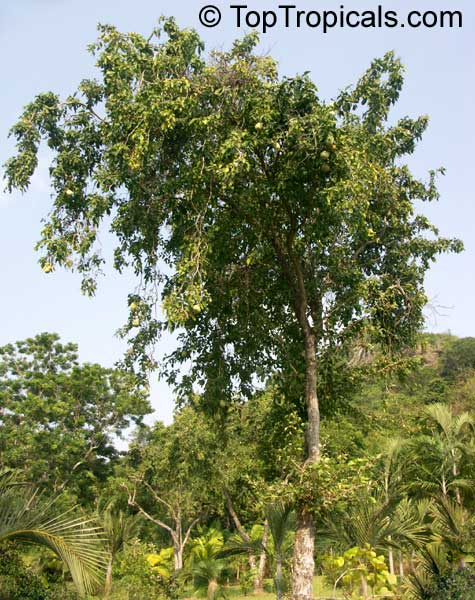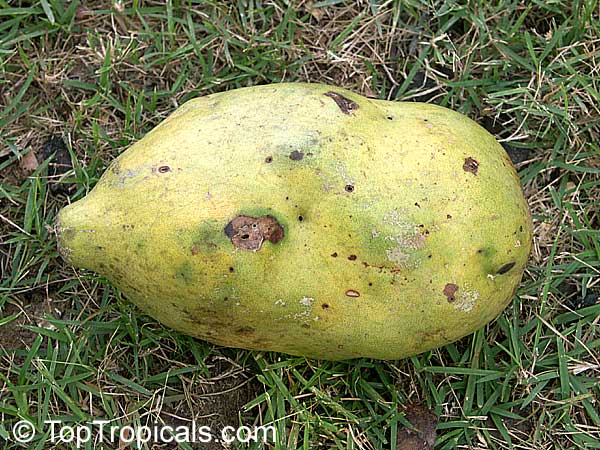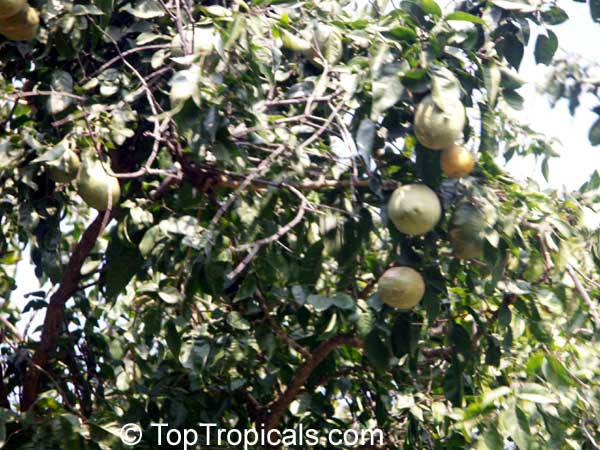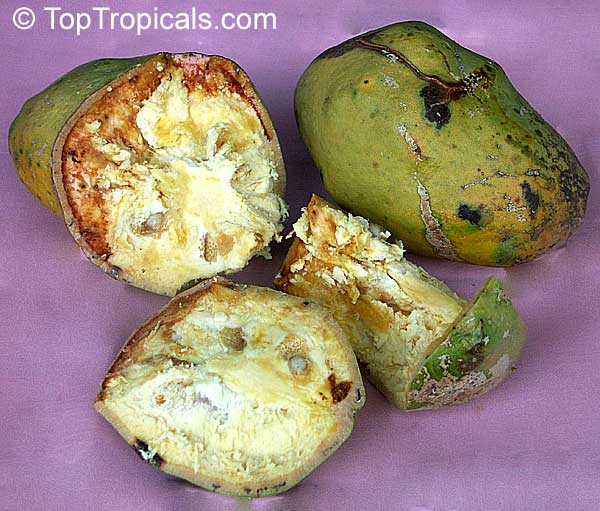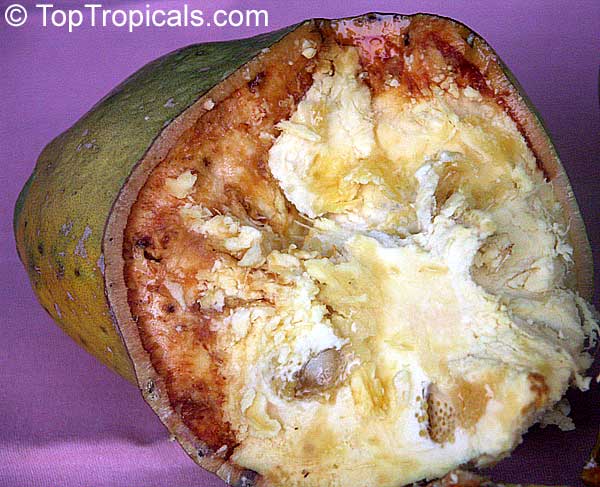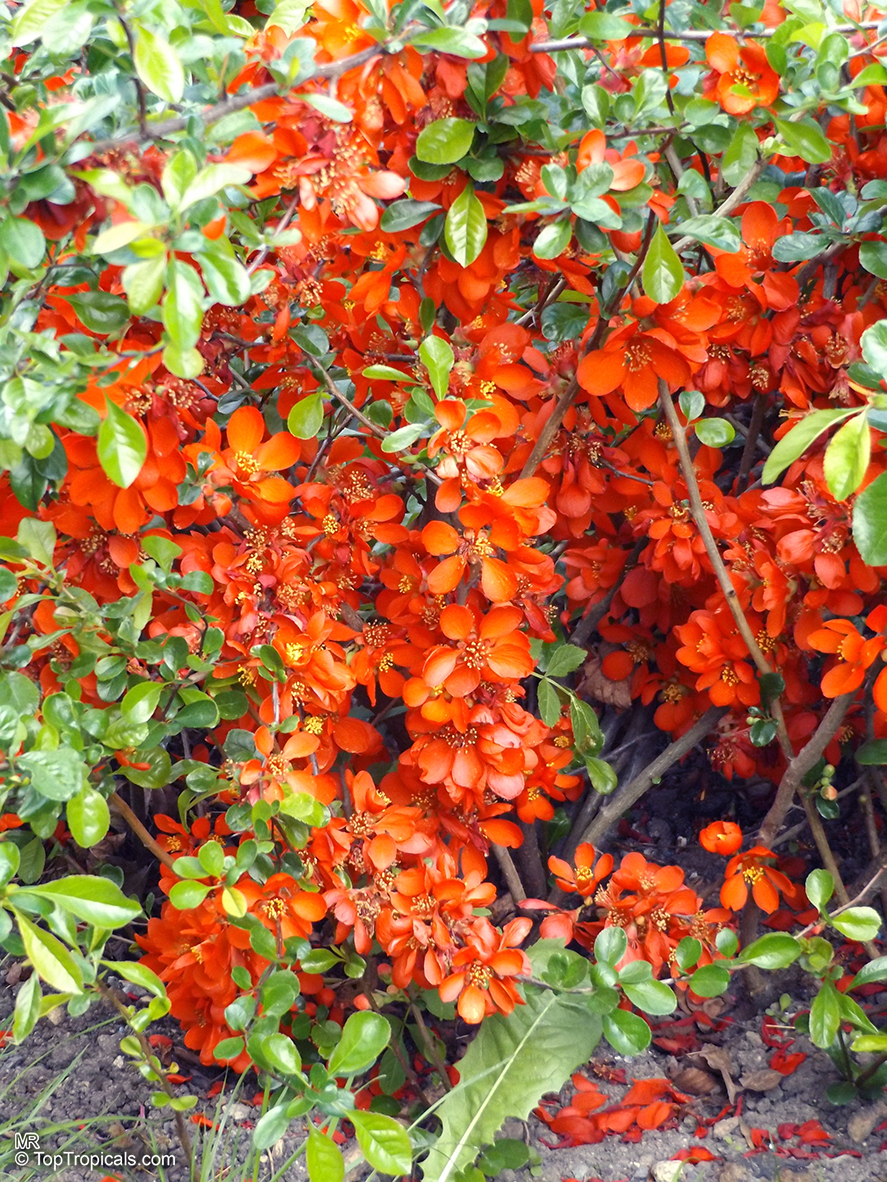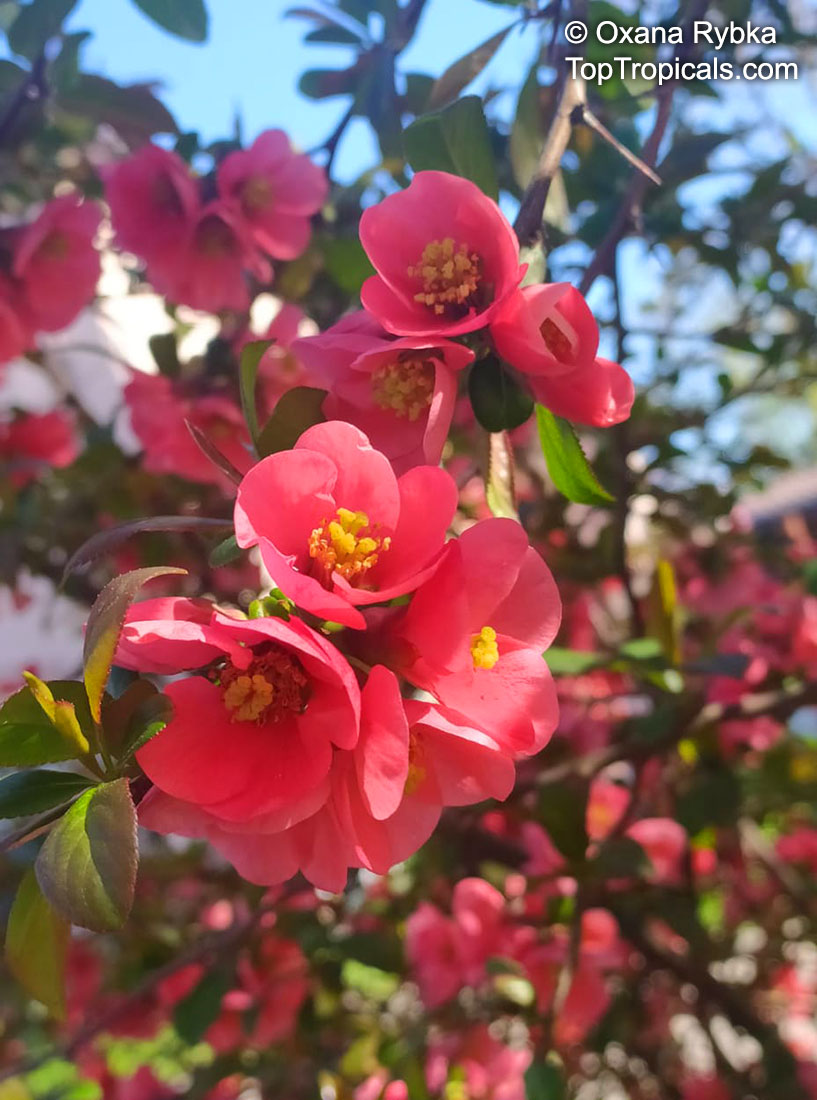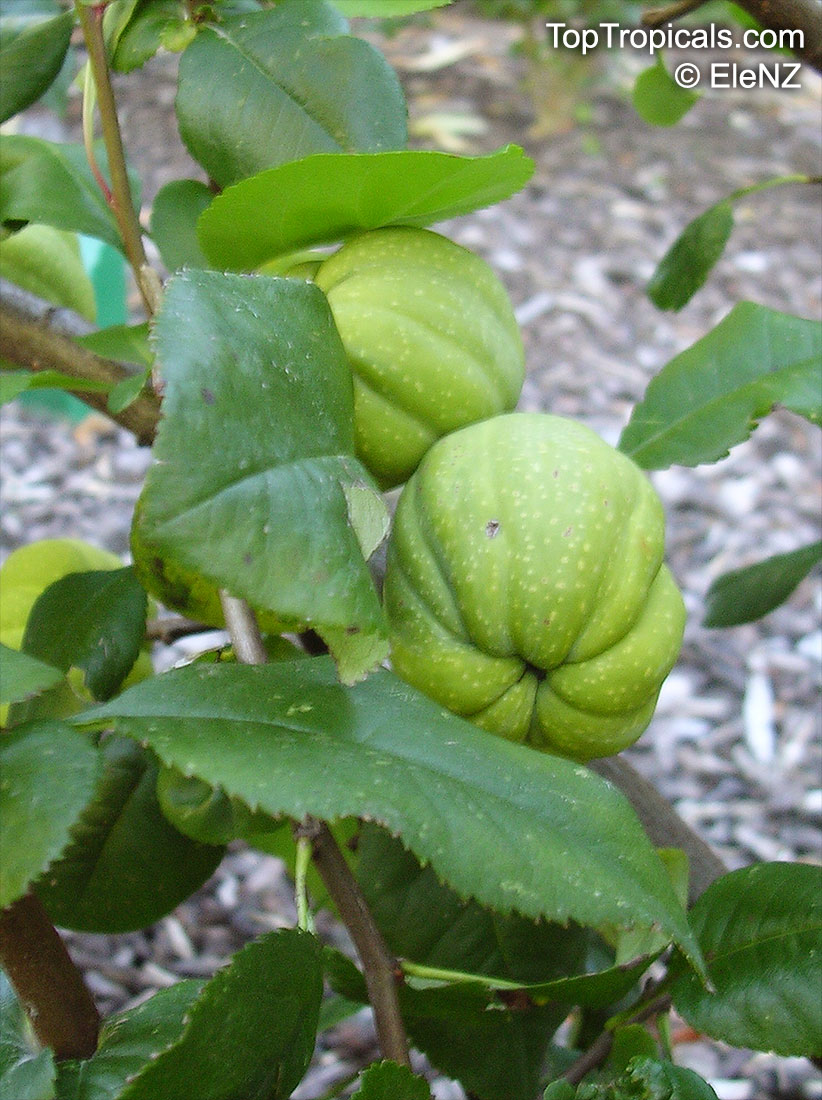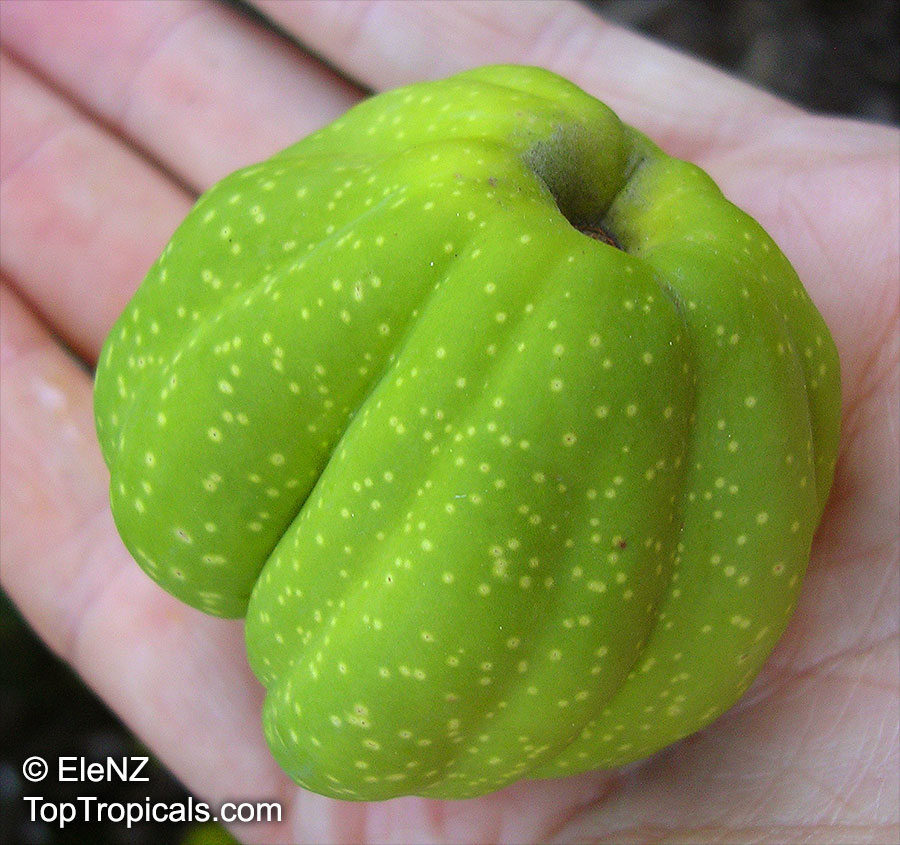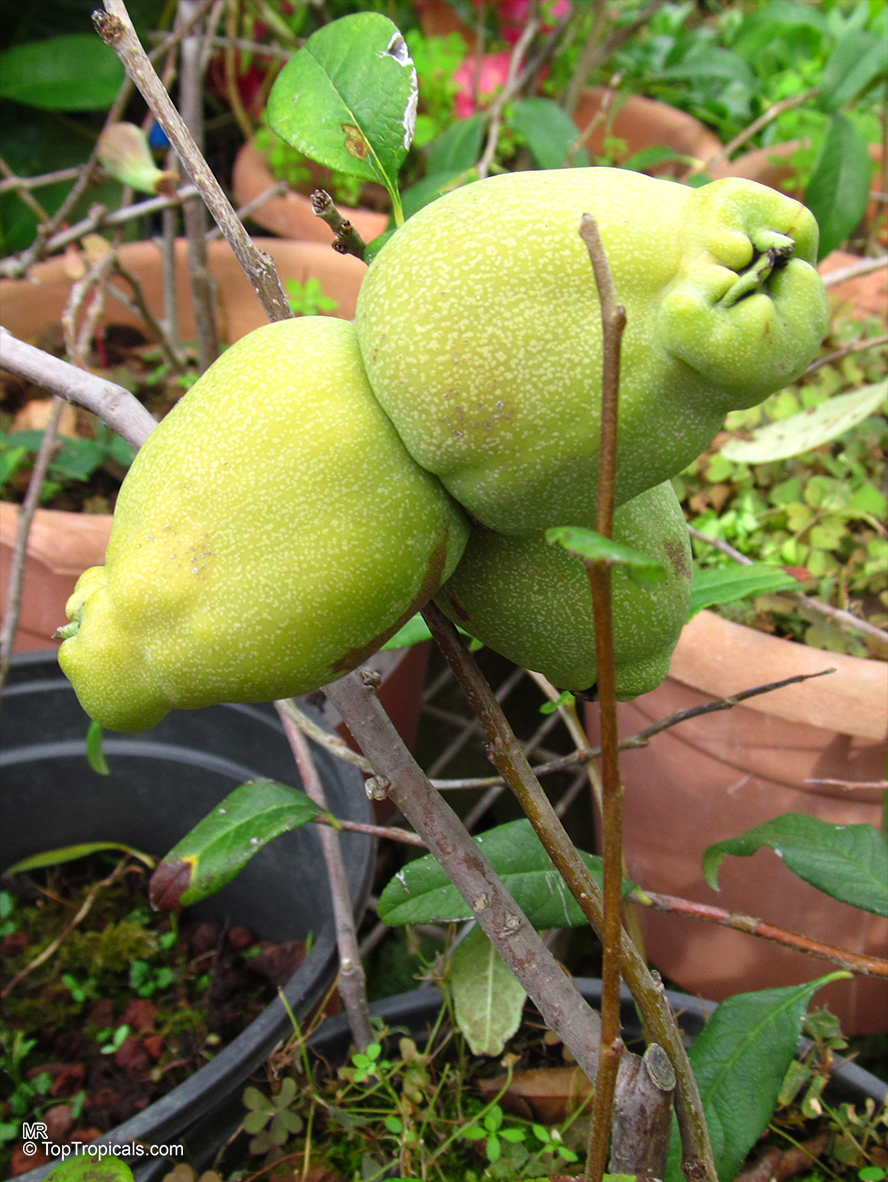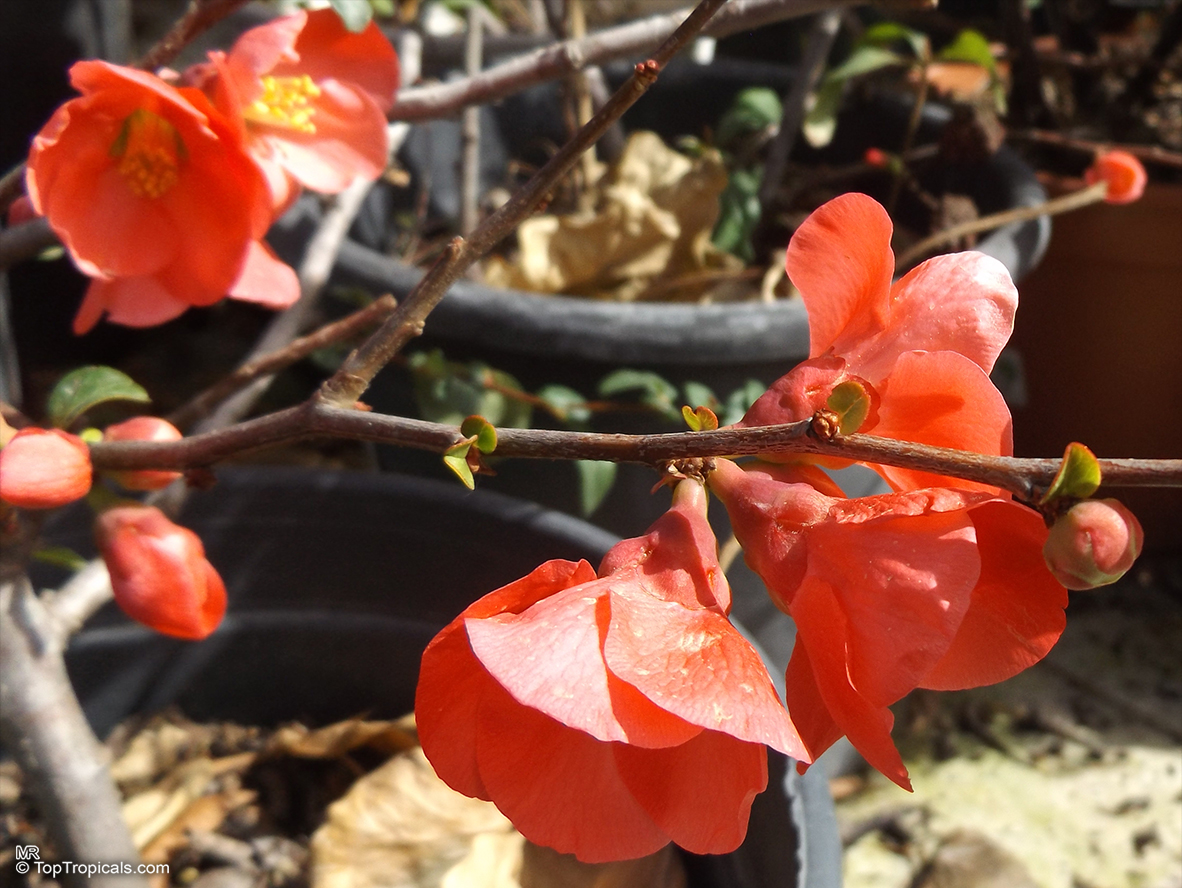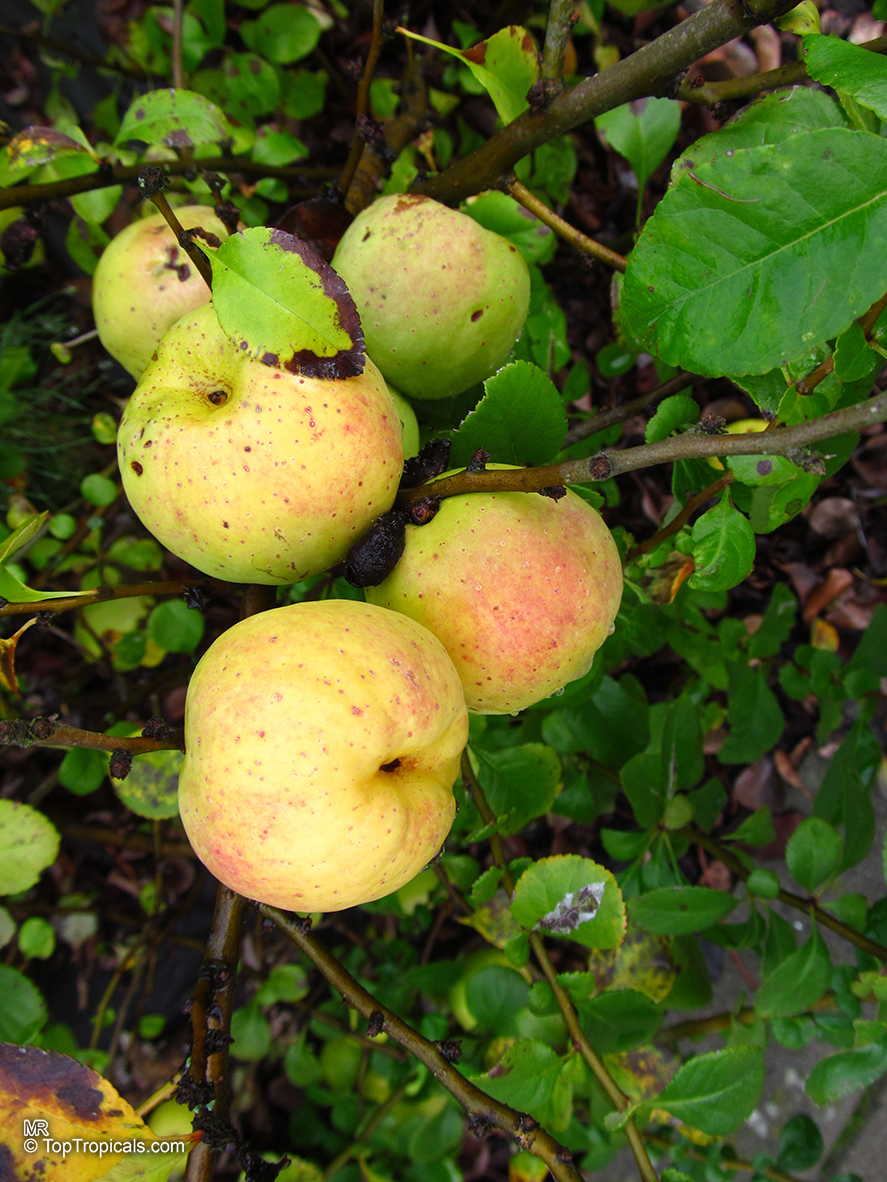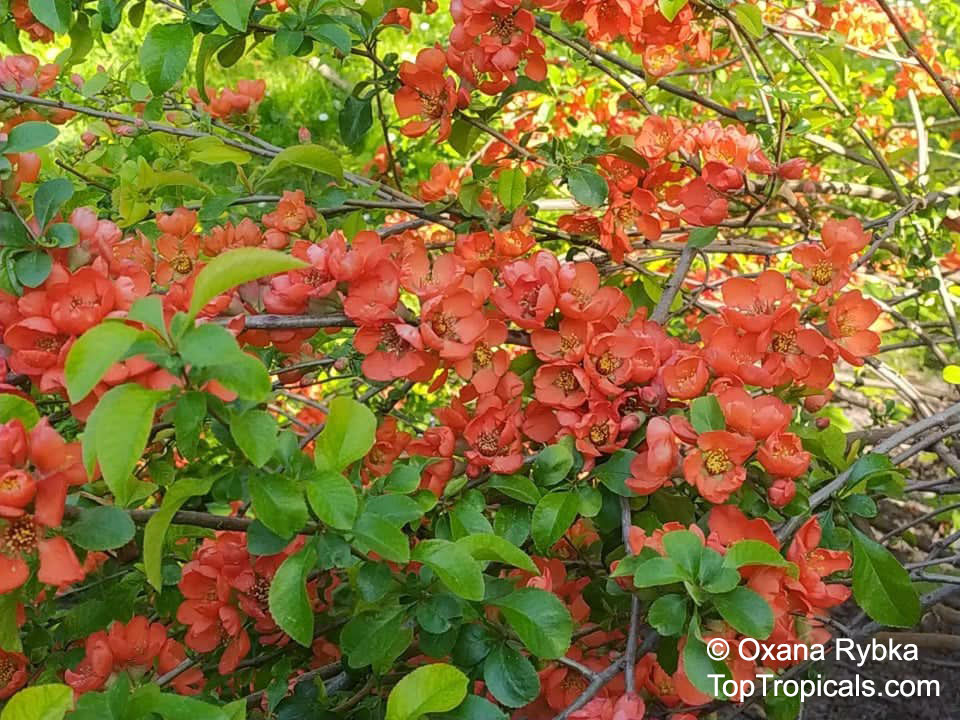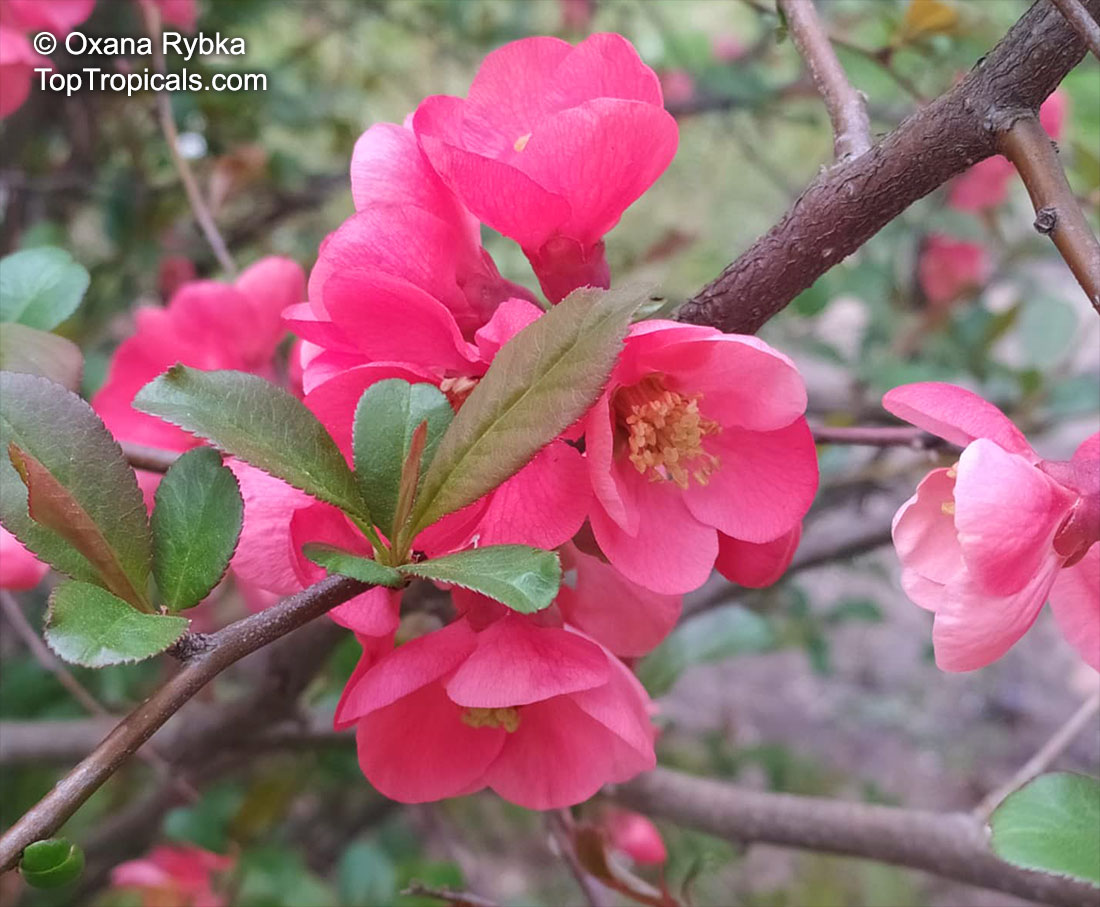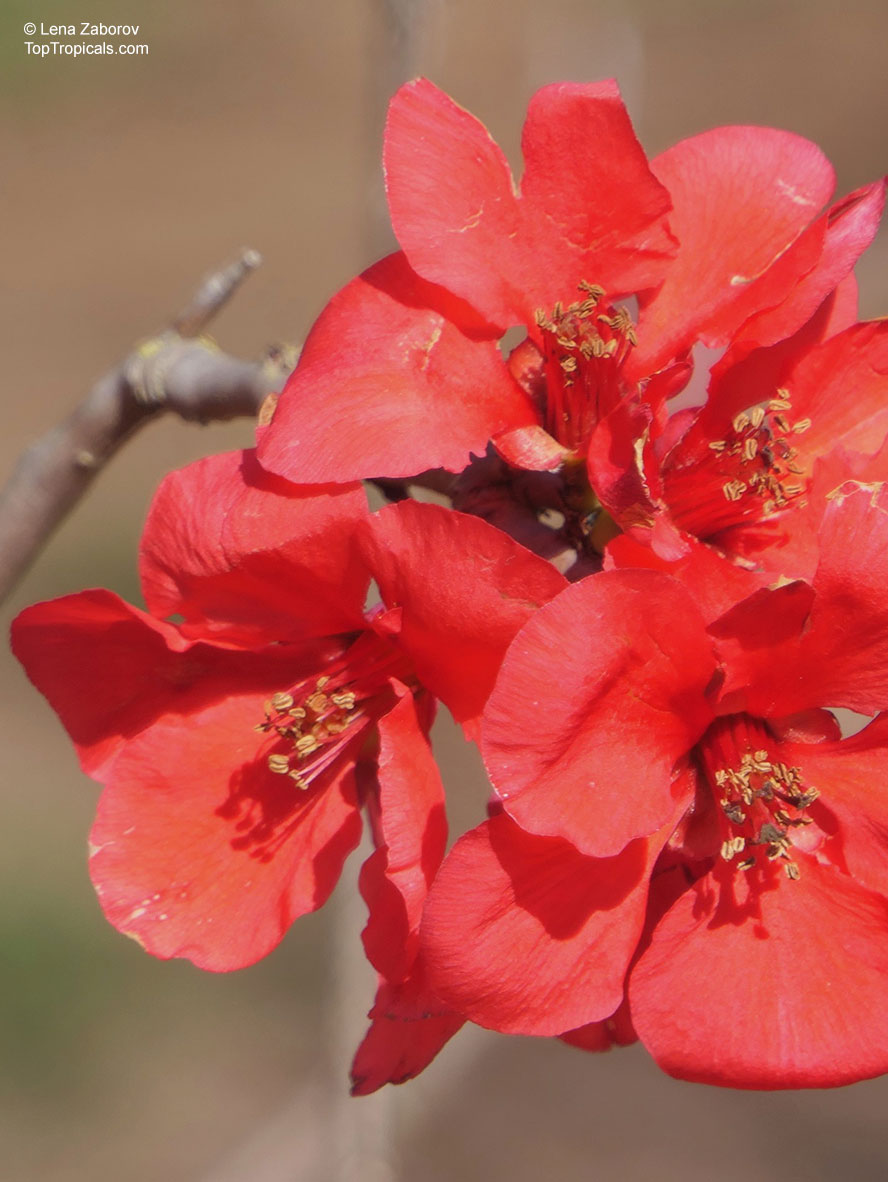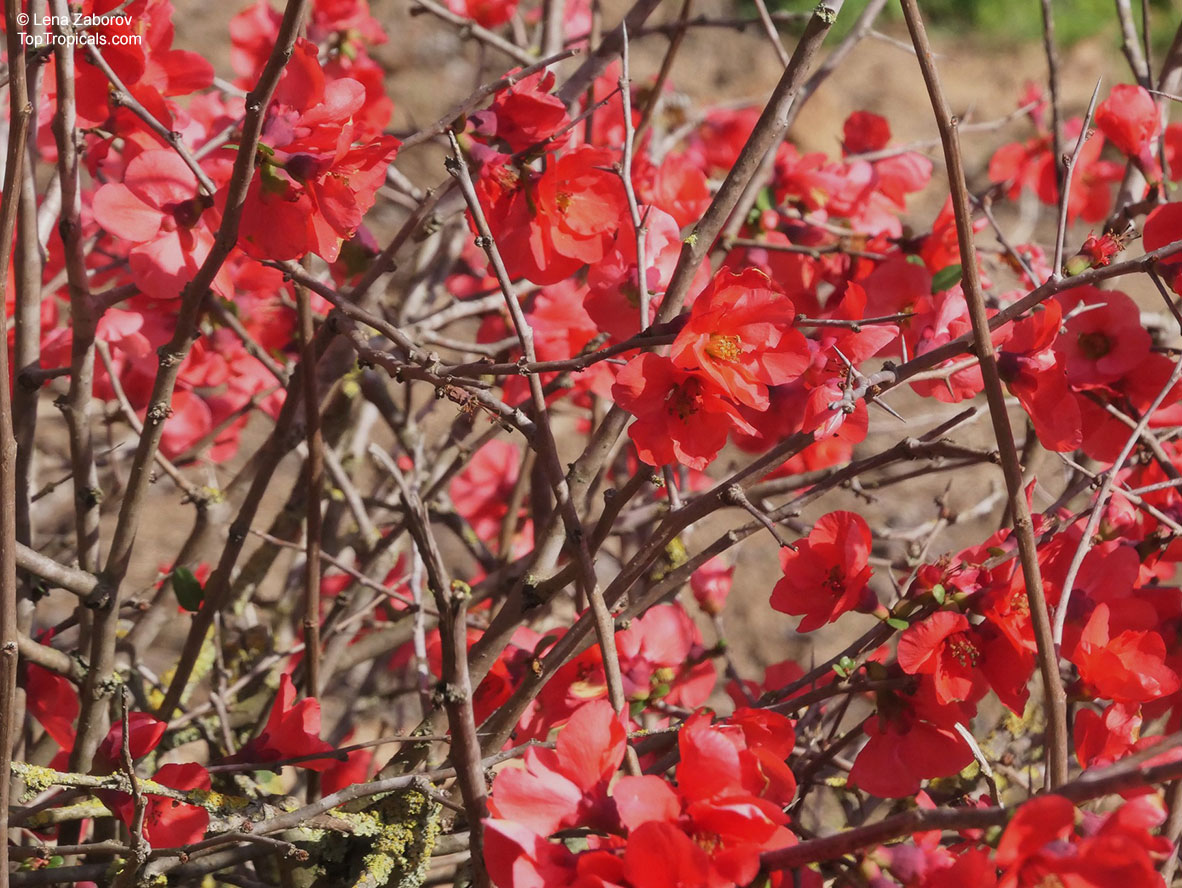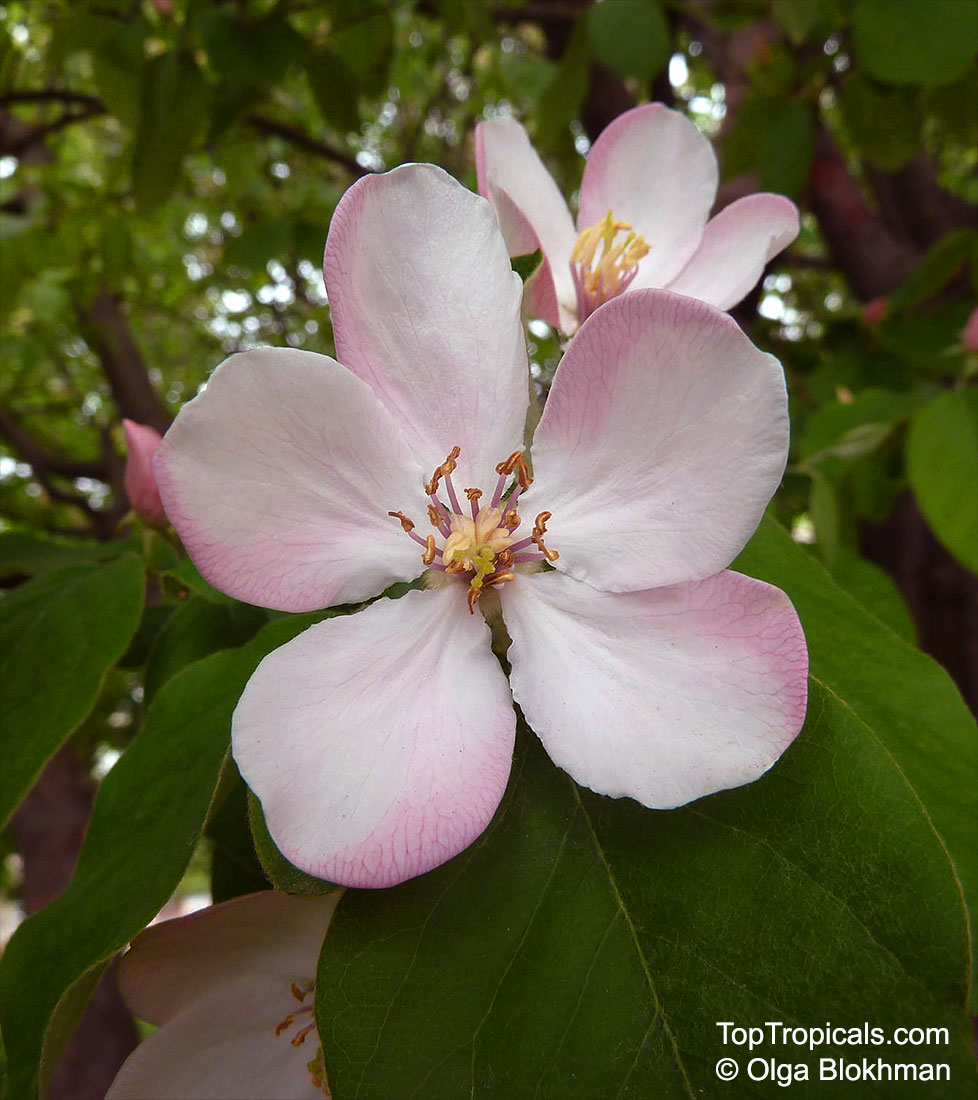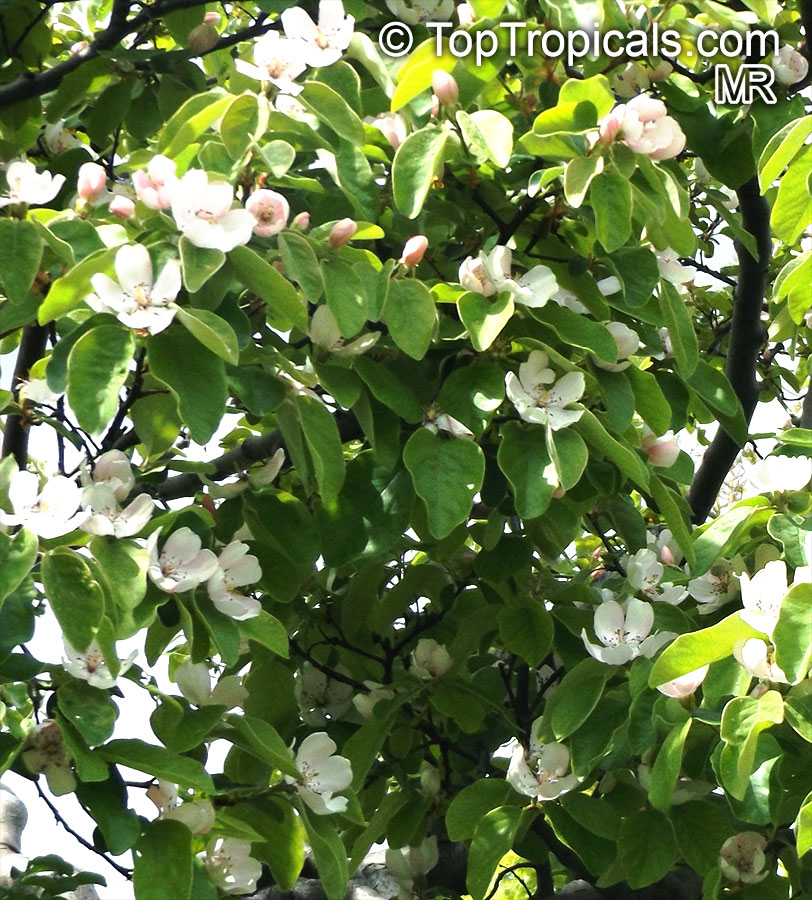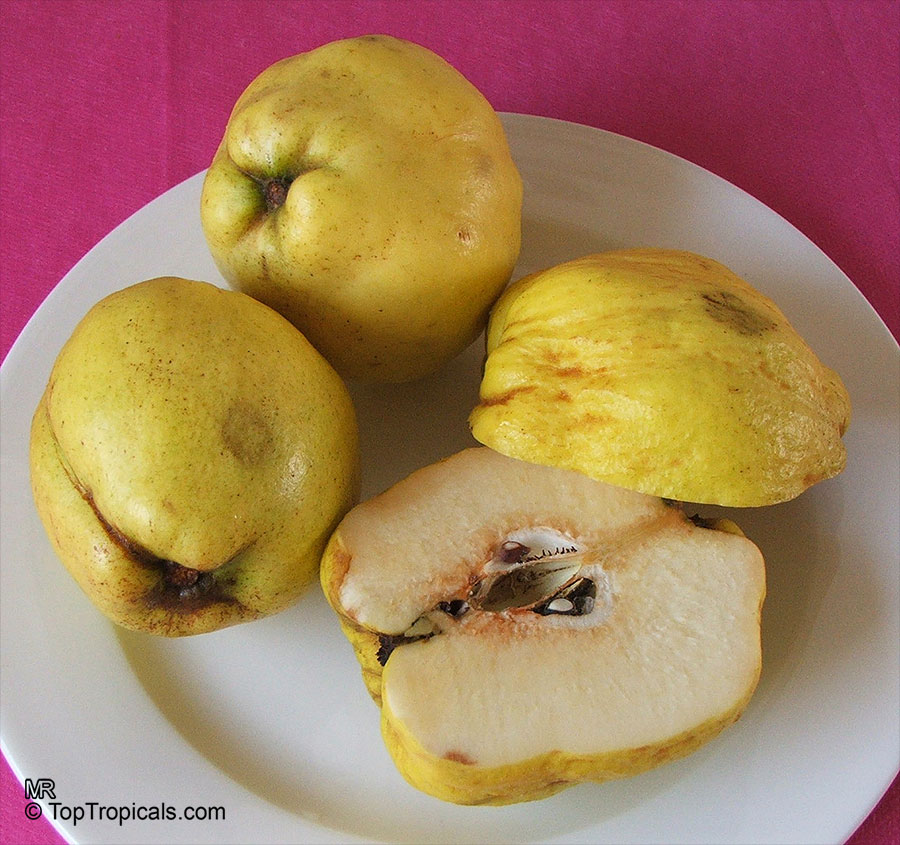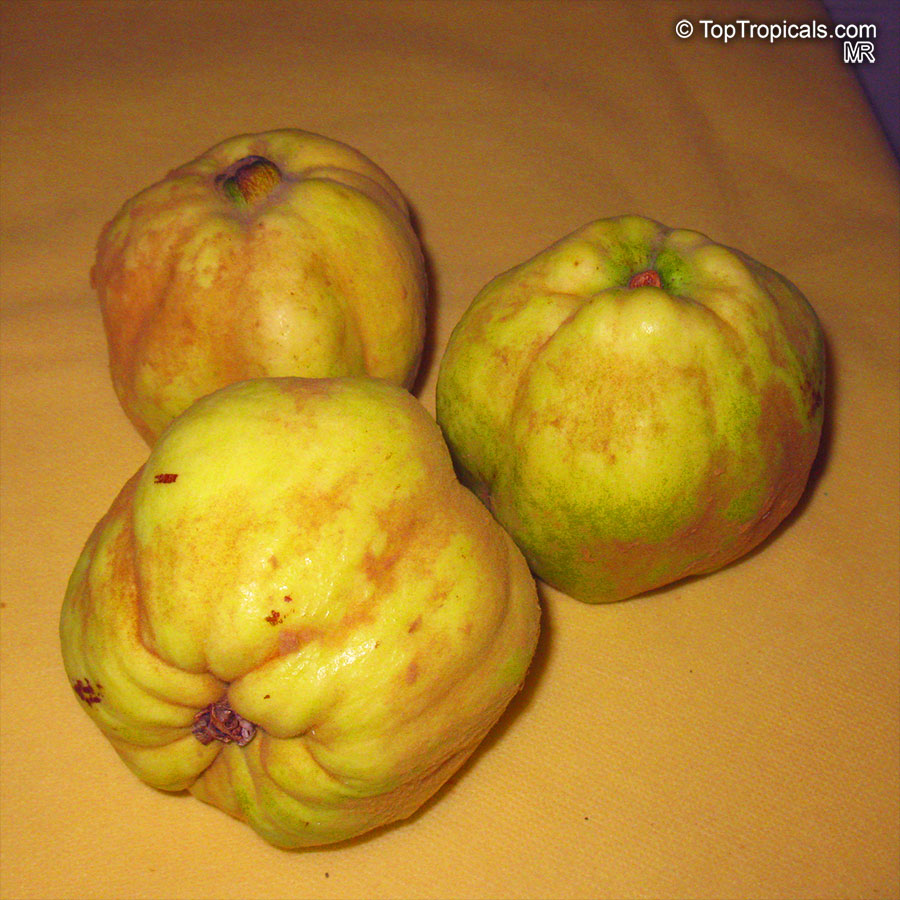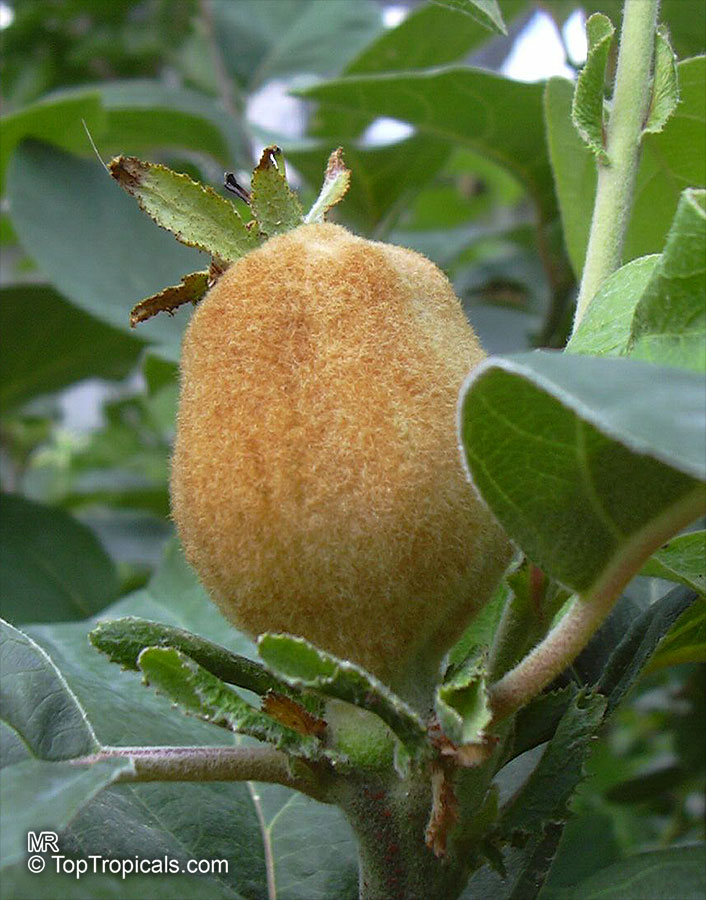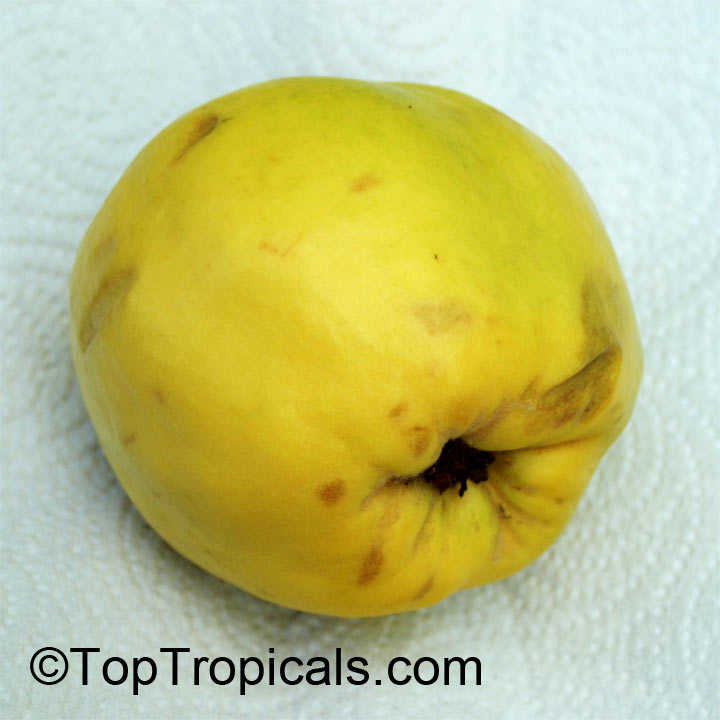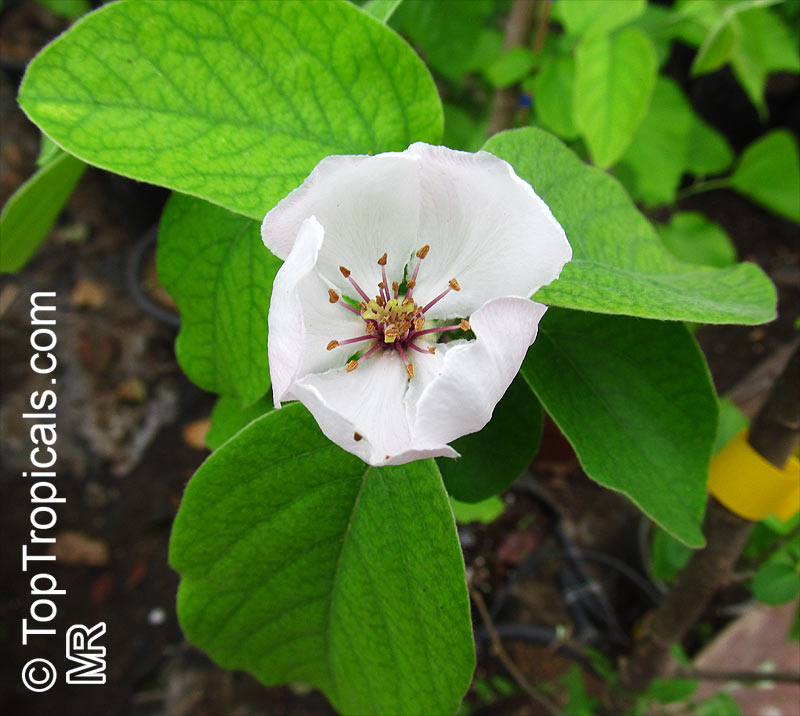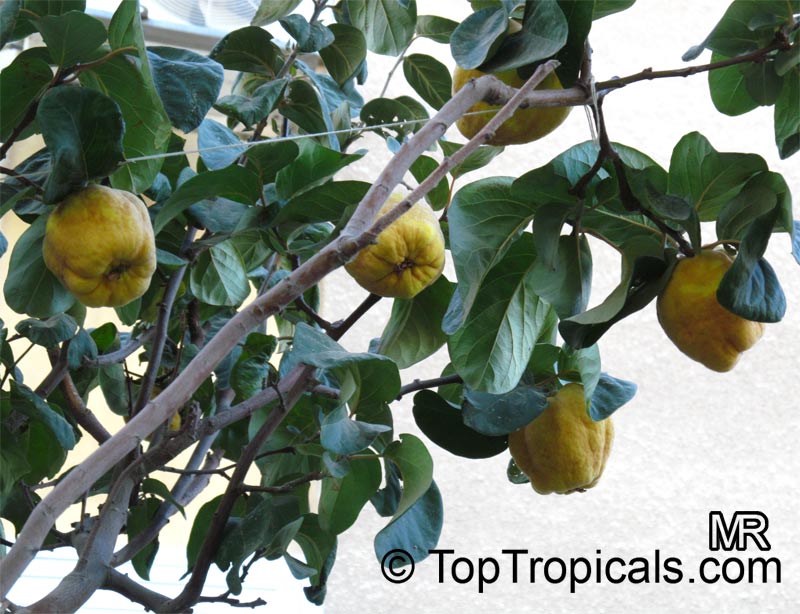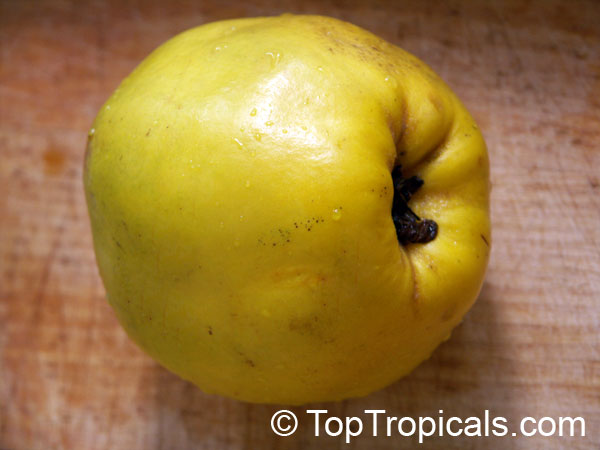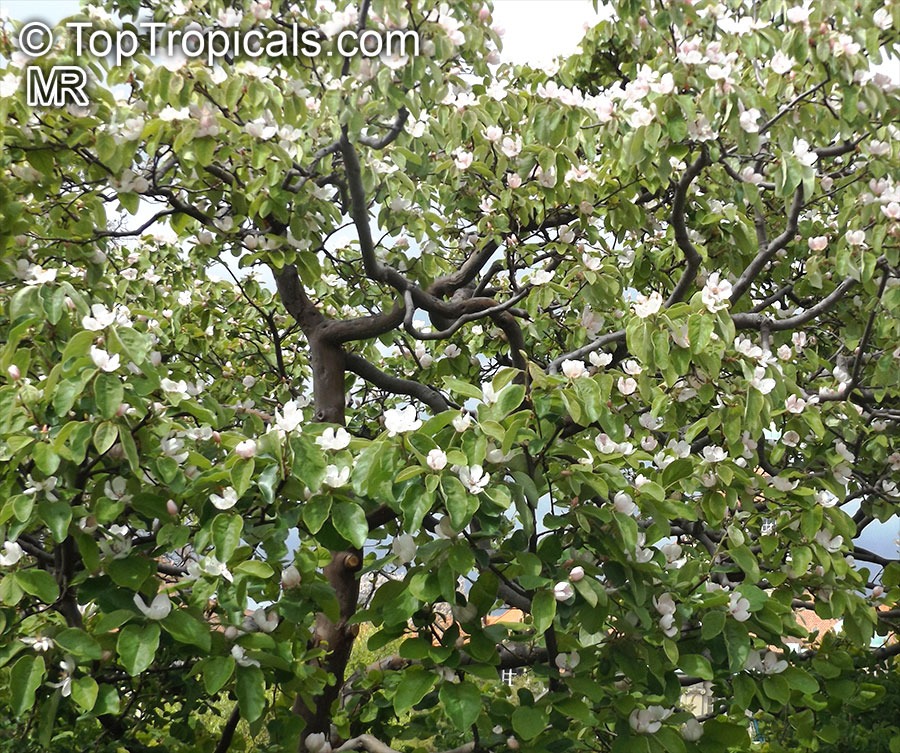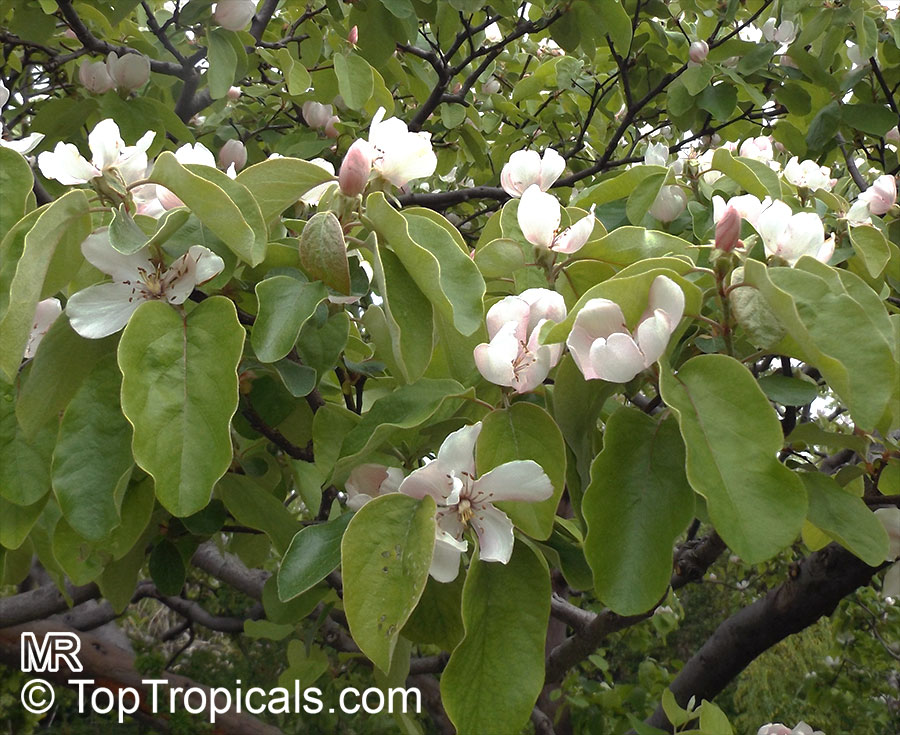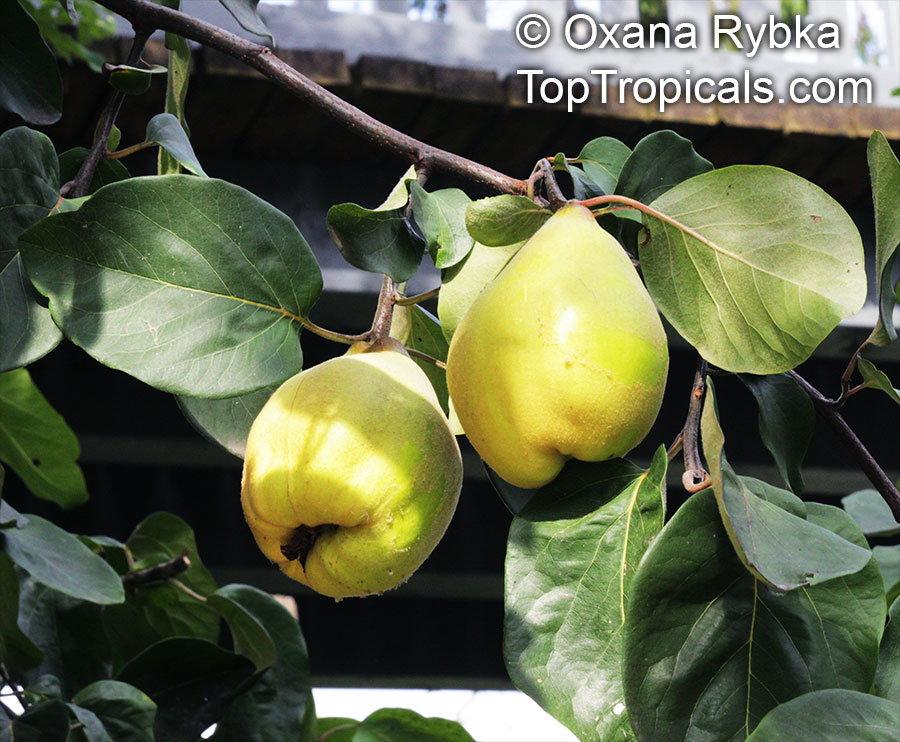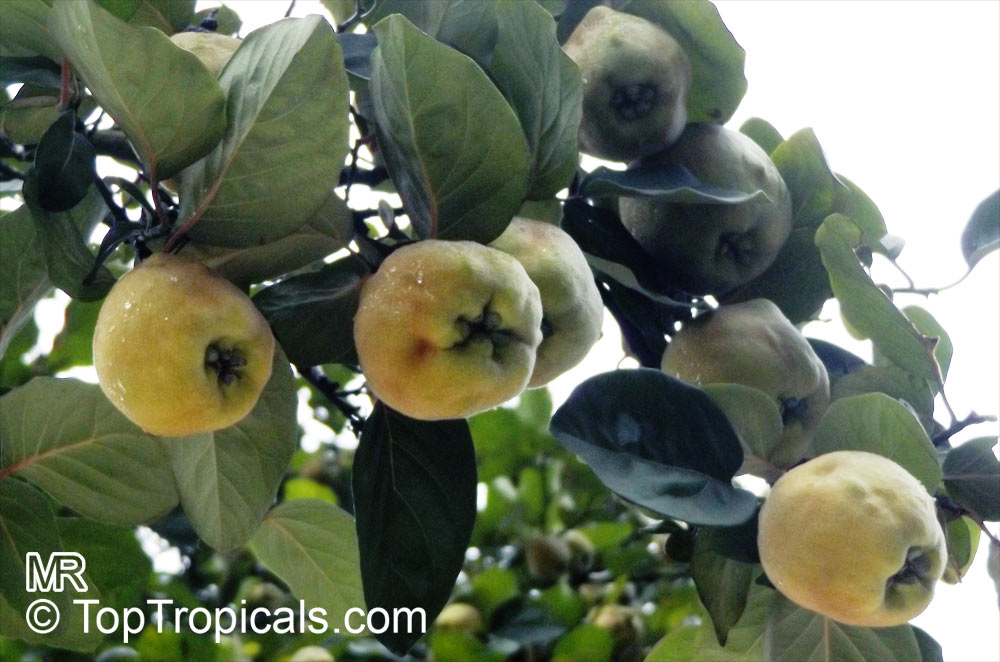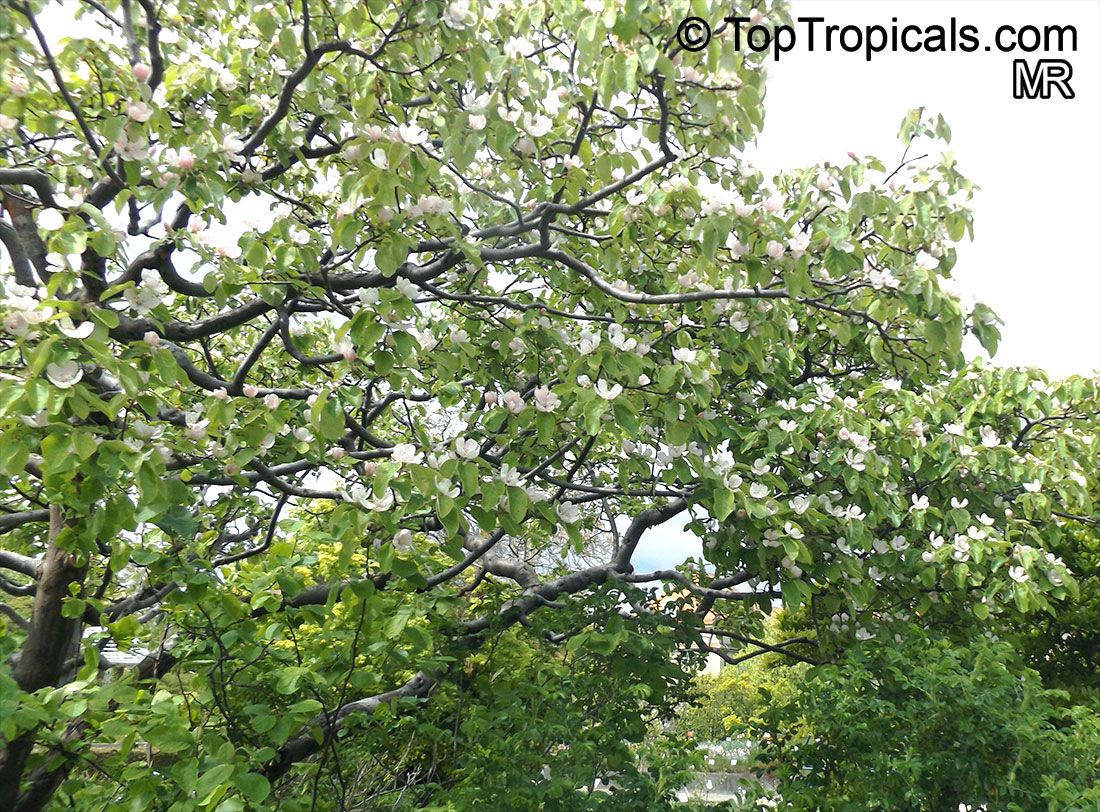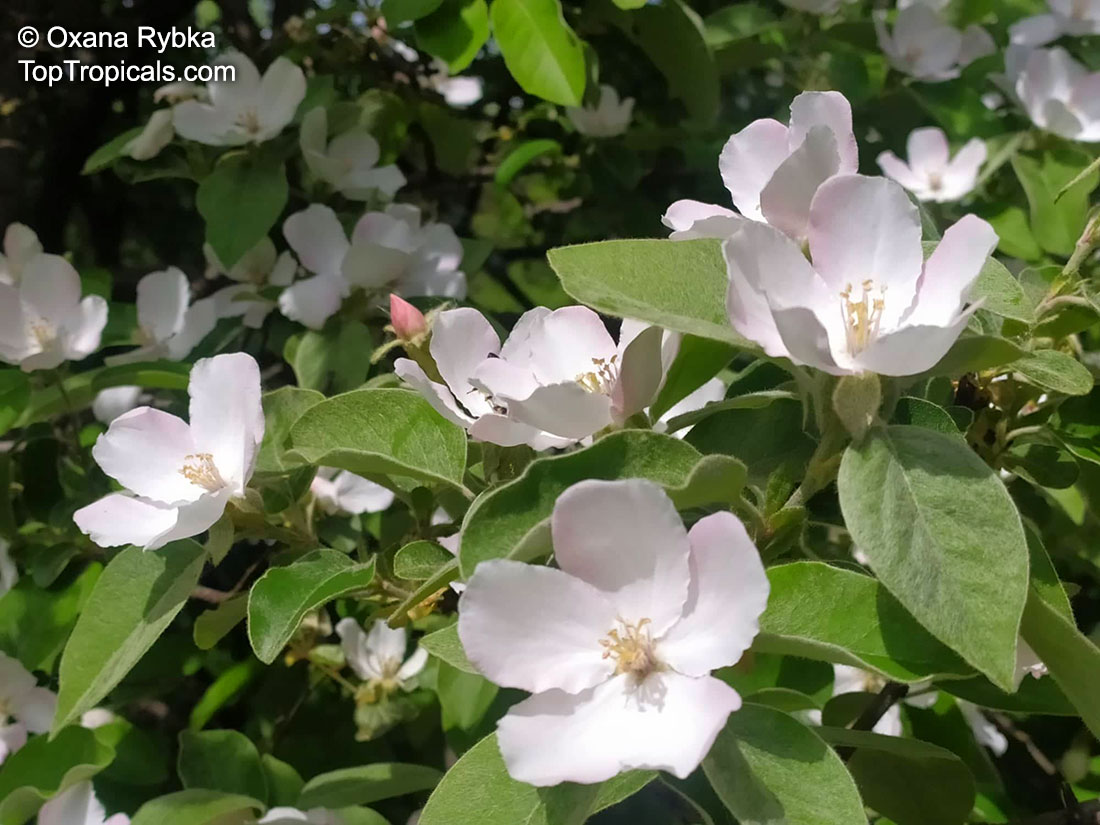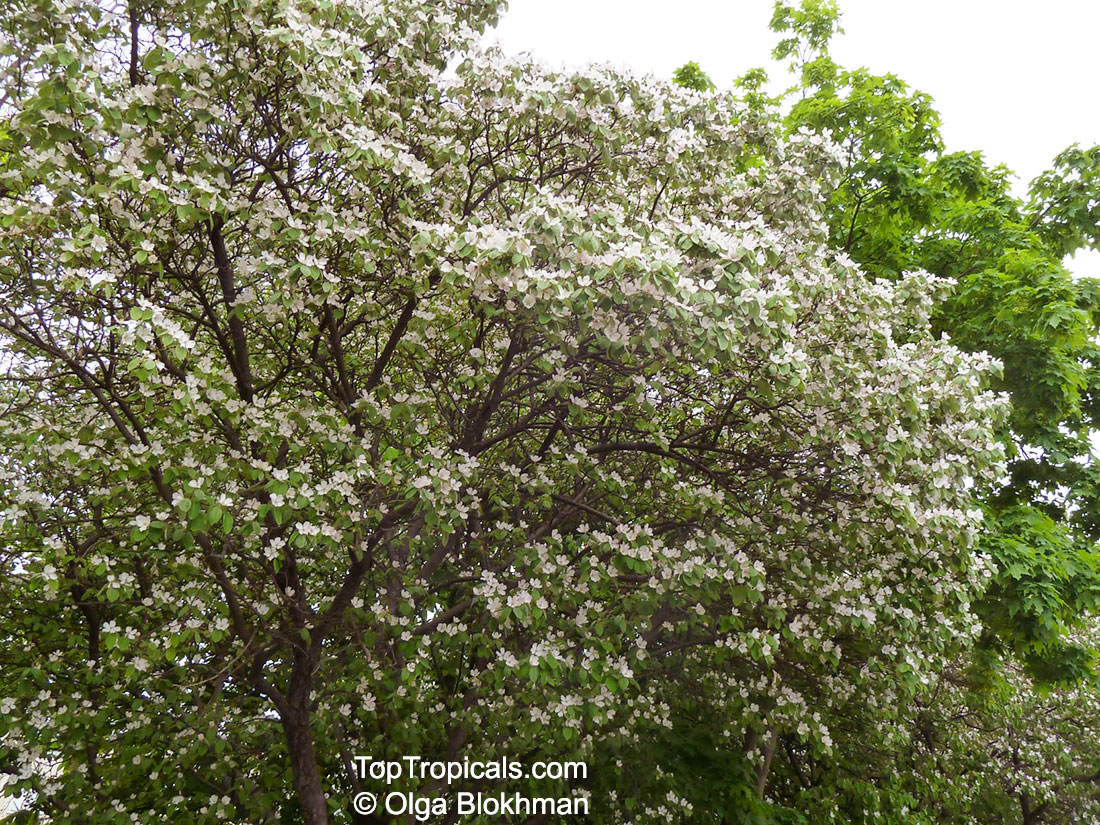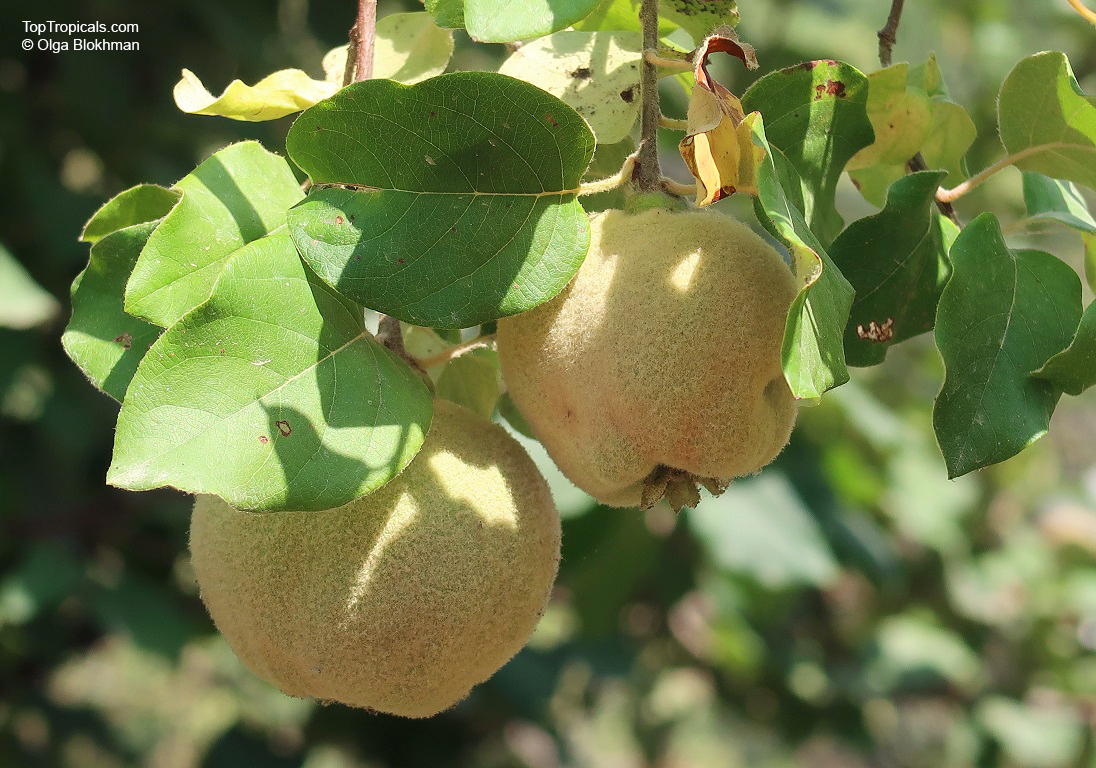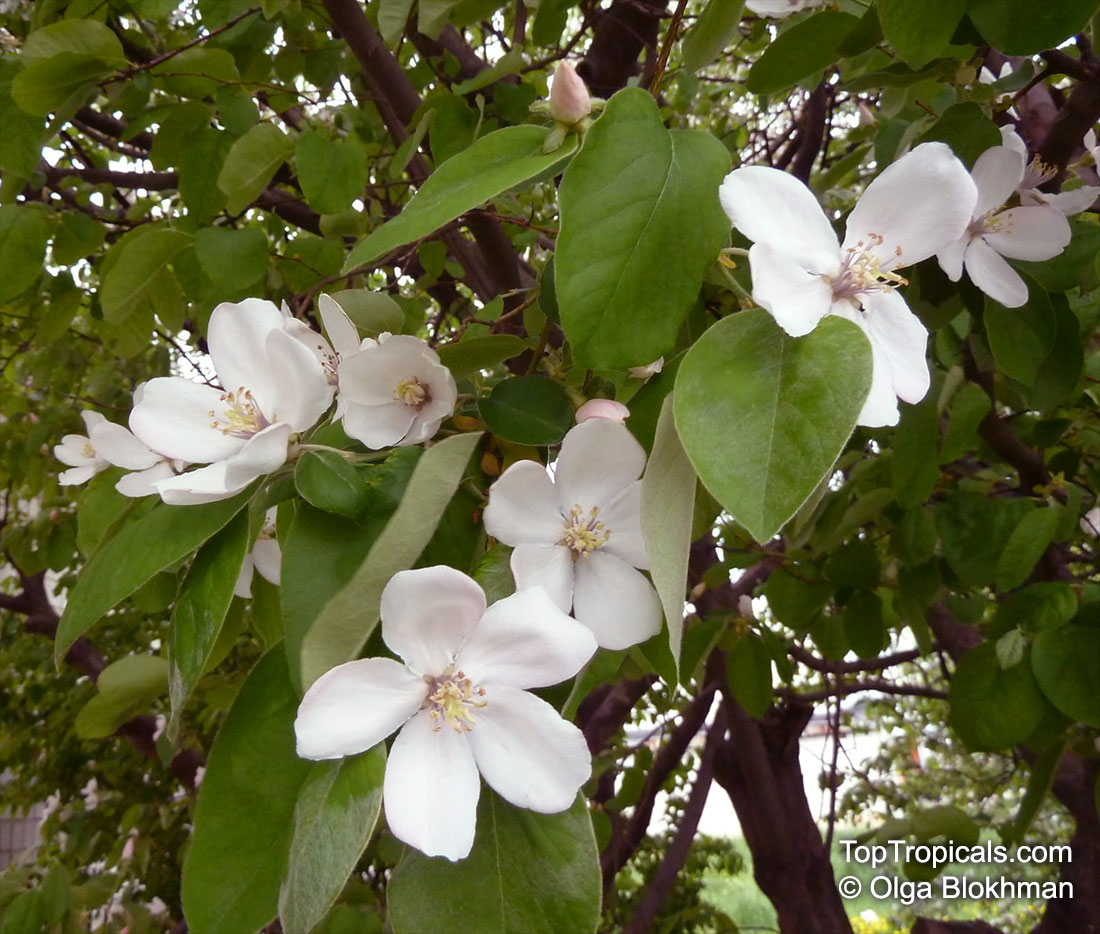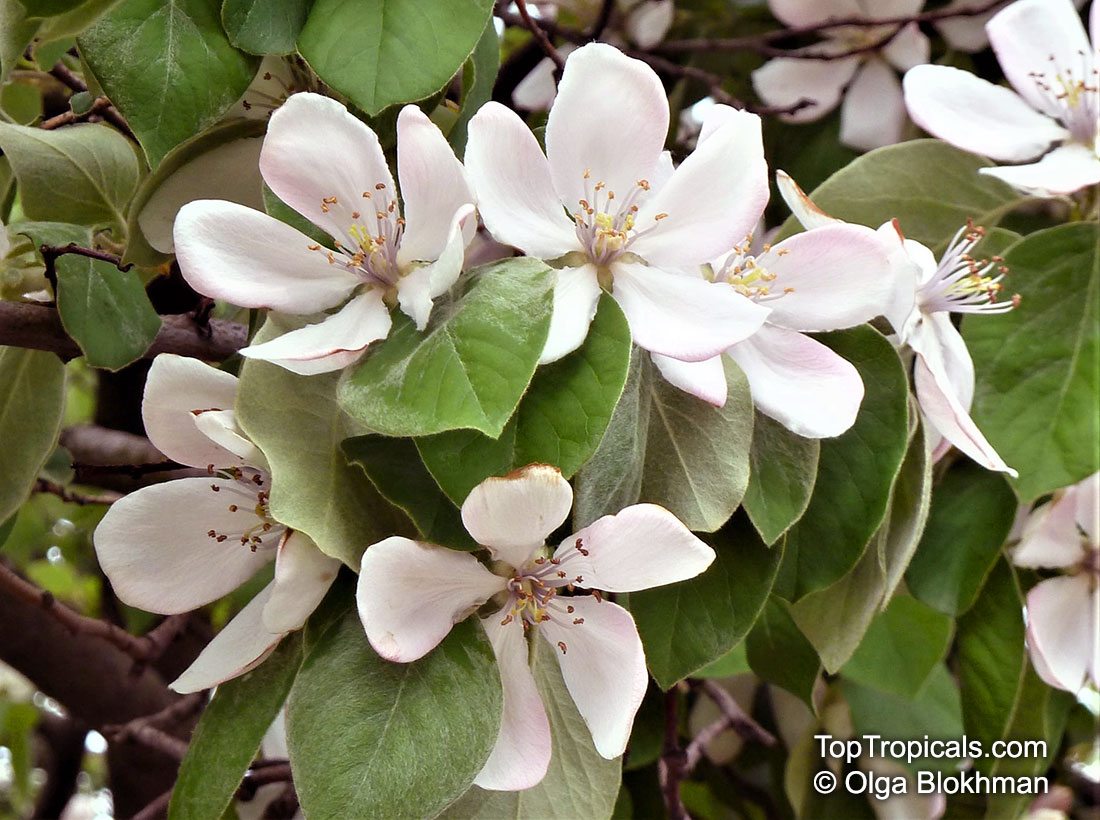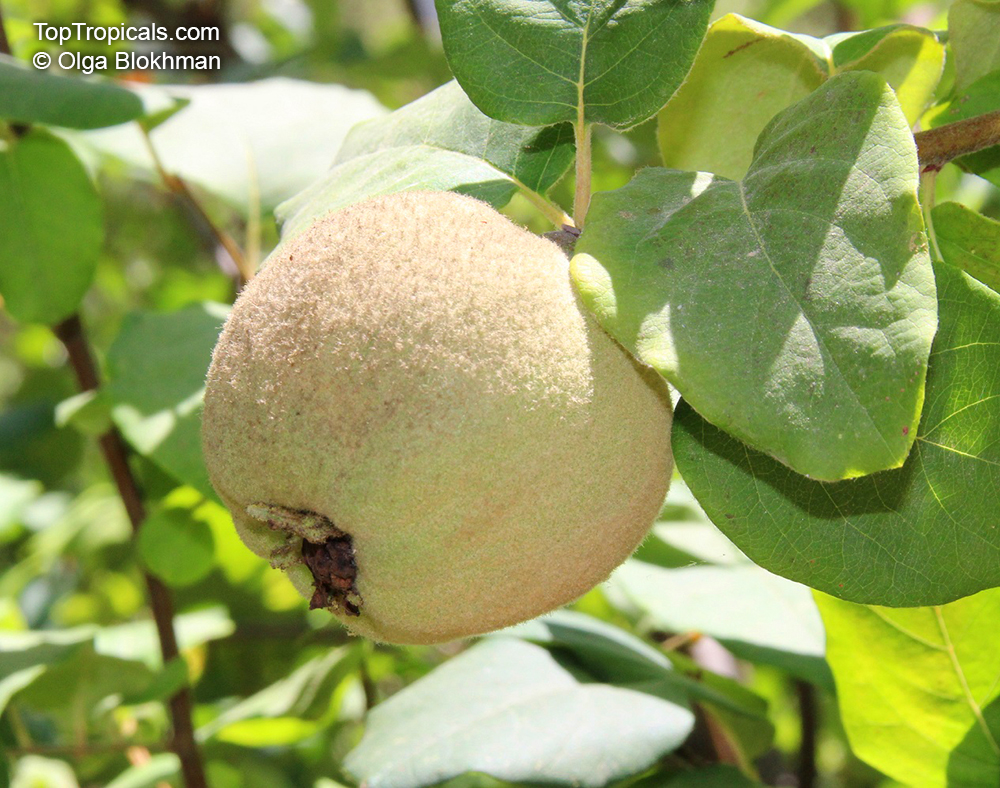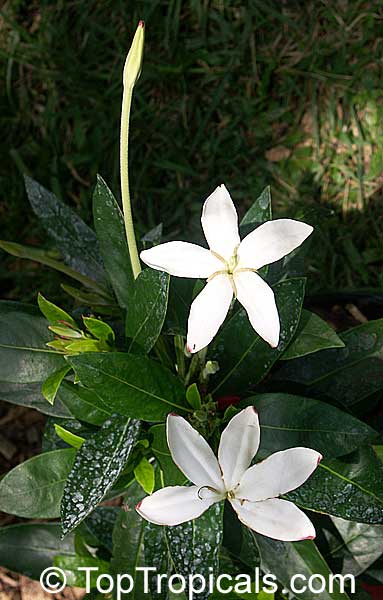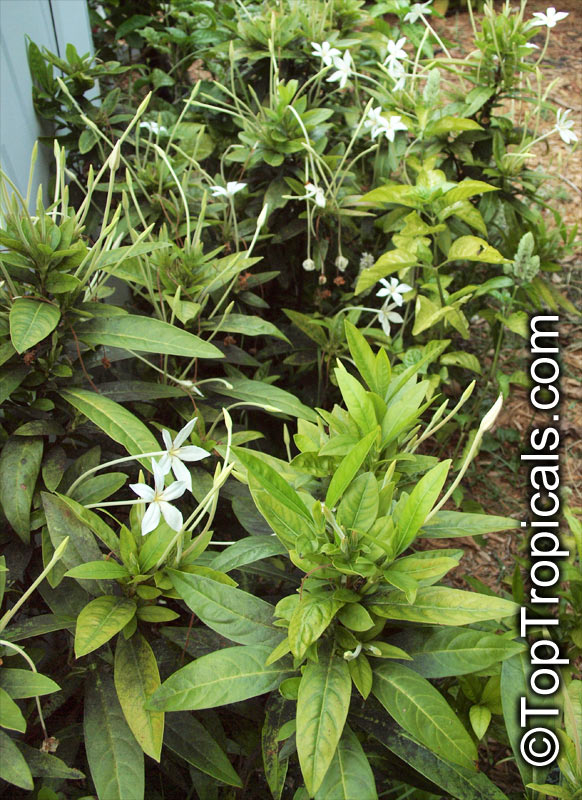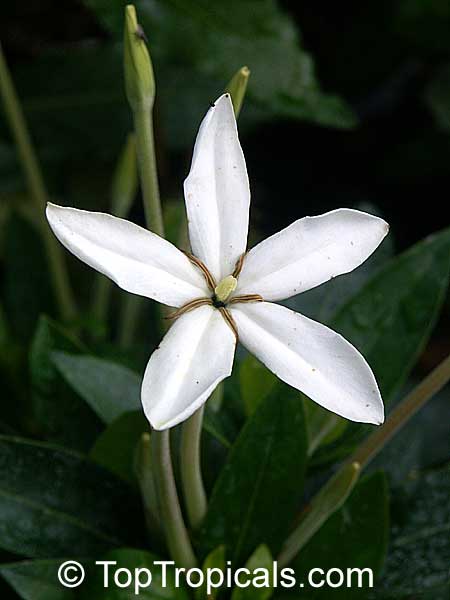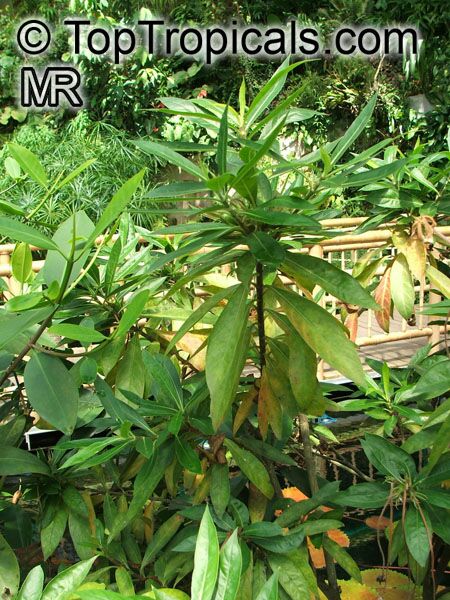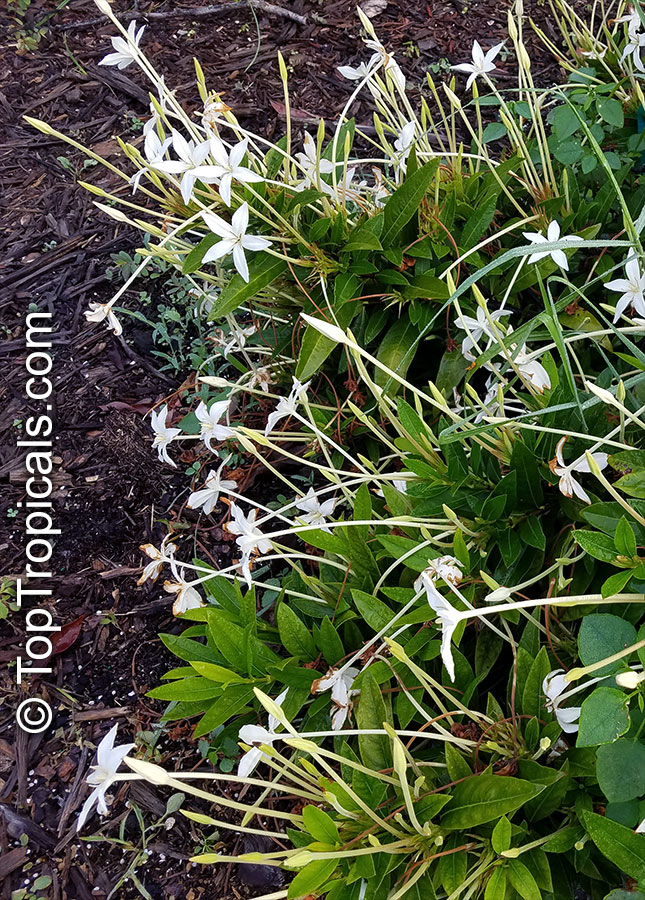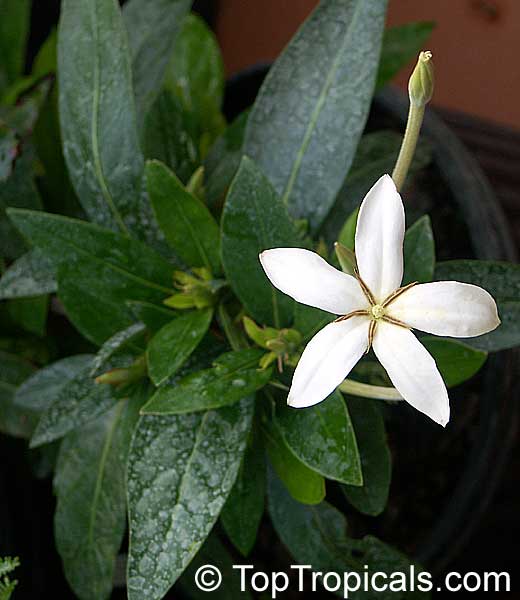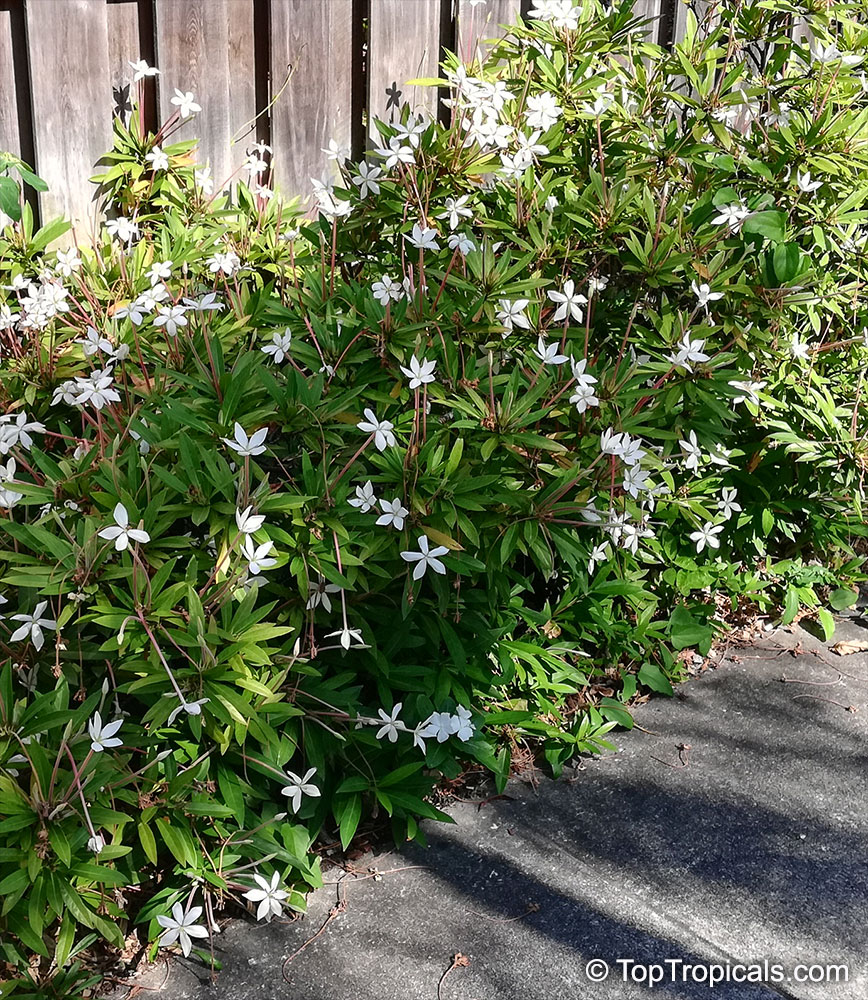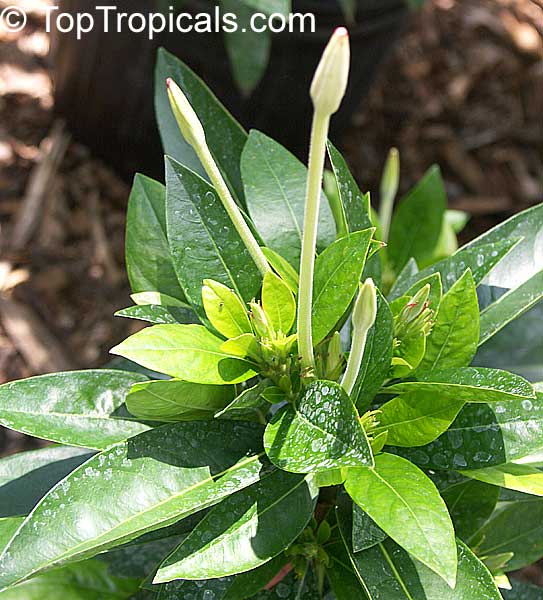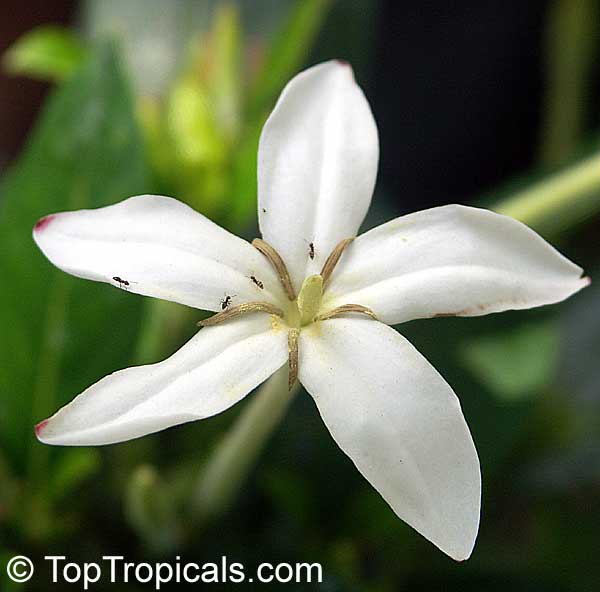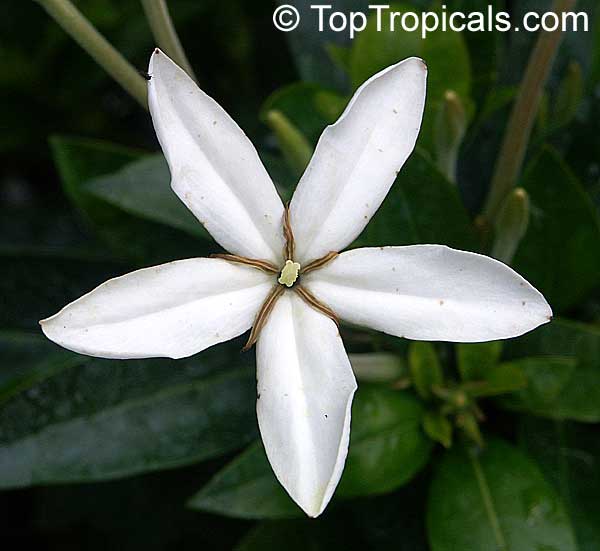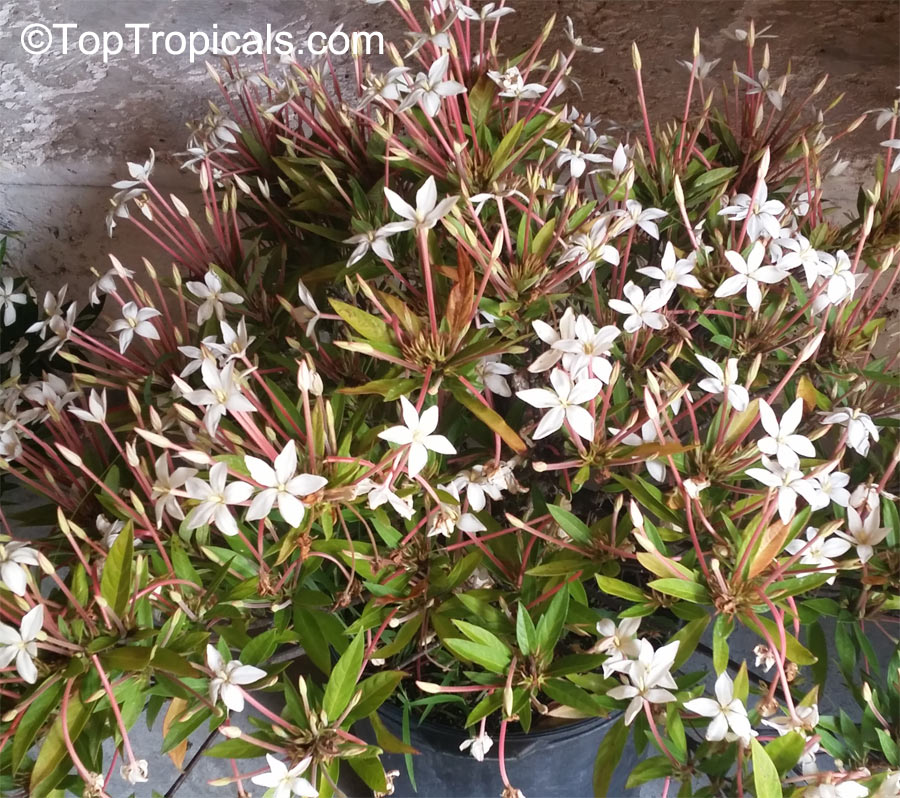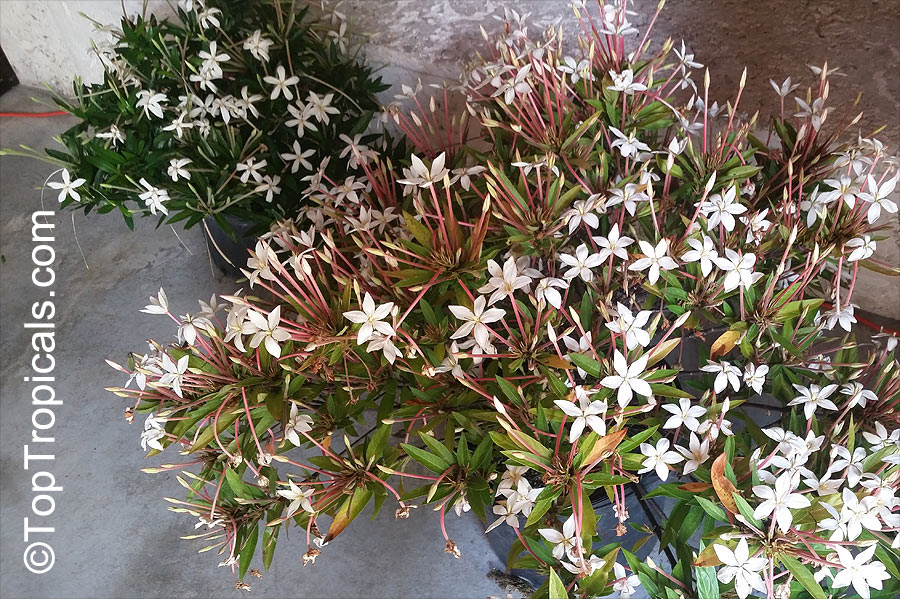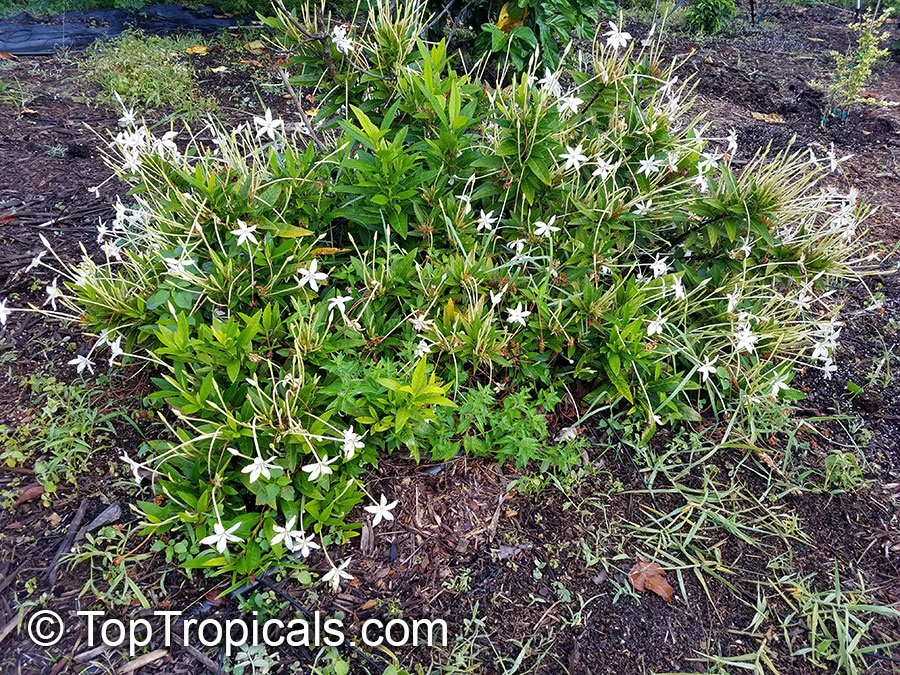Quince - Plant Encyclopedia Results
Top Tropicals Plant Encyclopedia
| Number of plants found: 4 |
Botanical name: Aegle marmelos
Common names: Bael, Bengal Quince, Indian Bael, Wood Apple, Matoom
Family: Rutaceae
Origin: India









This plant is a medium sized tree that grows up to 40ft.This plant is known to posses some medicinal properties. All parts of this tree including, the roots, leaves, trunk, fruits, and seeds, are used for curing one human ailment, or another. The fruits are usually eaten by people.They taste like marmalade, and smell like roses. They are also used in the preparation of many medicines in villages. These protein-rich fruits are also used in making some very good drinks. They can also make a wonderful jam. The plant easily withstands long periods of drought, which are needed for better fruit yields. It grows in most soil and climate types, and requires little care when established.
Very rare plant. We have only few plants (see picture) for local pick up.
Bael, Bengal quince, Indian bael, Wood apple, Matoom. The offering of bael leaves is a compulsory ritual of the worship of Lord Shiva in the hills. This importance seems largely due to its medicinal properties. All parts of this tree, root, leaf, trunk, fruit and seed, are used for curing one human ailment or another. The fruits taste like marmalade, and smell like roses.
See picture of the actual plants for sale.
Recommended Fertilizer: SUNSHINE C-Cibus - Crop Nutrition Booster
SUNSHINE-Honey - sugar booster
This item can not be shipped. Pick up only. We can provide local delivery around Ft. Myers or Sebring, Florida. Contact us for an estimate. Non-pickup orders are subject to restocking fees.
Botanical name: Chaenomeles sp.
Common names: Flowering quince, Dwarf quince
Family: Rosaceae
Origin: eastern Asia












This group consists of three hardy, deciduous shrubs from eastern Asia, commonly known as Flowering Quinces. These thorny shrubs are suitable for growing against walls, in borders and standing alone. Flowering Quinces are easily grown and are valued for their saucer-shaped blossoms, which may be red, pink, orange, or white and are followed by large, fragrant fruits. Flowering Quinces can be grown in shady areas, though they flower best in sunny positions. They can be grown in well-drained, friable soil.
The fruit is apple-shaped and about 4cm in diameter.
Very harsh and acid raw but fragrant when cooked, imparting a strong pleasant flavor to jams and jellies.
The rich aromatic juice, as tart as a lemon, is squeezed and used for culinary purposes.
Botanical name: Cydonia oblonga
Common name: Quince
Family: Rosaceae
Origin: Southwest Asia













The quince is a deciduous thornless shrub or small tree, 13-20 ft high, with crowded gnarled branches and a low crooked habit. Young branchlets are covered with a pale greyish wool. Fruits are light golden-yellow, green or orange, usually pear shaped and very fragrant.
Quinces contain high levels of pectin. They are used to make jam, jelly, or they may be peeled, then roasted, baked or stewed. Quinces have long been used as a herbal medicine, they are also used in the cosmetic industry and for medicinal cosmetics.
Botanical name: Augusta rivalis
Common names: Marmelada, Purui, Trompito, Madrono, Zumbo, Guayabito de monte, Star of Belize, Alibertia
Family: Rubiaceae
Origin: Amazon River Region, Brazil










Ornamental alibertias have large slightly fragrant flowers, similar to some gardenias or keilarsenia. It is a beautiful landscape shrub that can be used for small gardens or containers. The plants bloom profisely through summer, and are easy to take care of.
One of the species is a fruit tree - Alibertia edulis. It is a small erect tree, usually only to 10-15ft high. Flowers are white, large and slightly fragrant, followed by a green fruit, similar in size and shape to the pomegranate. Its black pulp is said to resemble marmelade and quinces. Eaten fresh out of hand, or used to make jellies and sweets.
It prefers filtered light and can tolerate shade - this is a great choice of flowering showy plant for shaded areas!
Recommended Fertilizer: SUNSHINE Megaflor - Bloom Nutrition Booster
Last one
Use link to repeat this search:
https://toptropicals.com/cgi-bin/garden_catalog/cat.cgi?find=Quince&search_op=and&keyword_op=and&language=e&number=10
&no_change_lang=1&user=tt&sale=1&first=0
